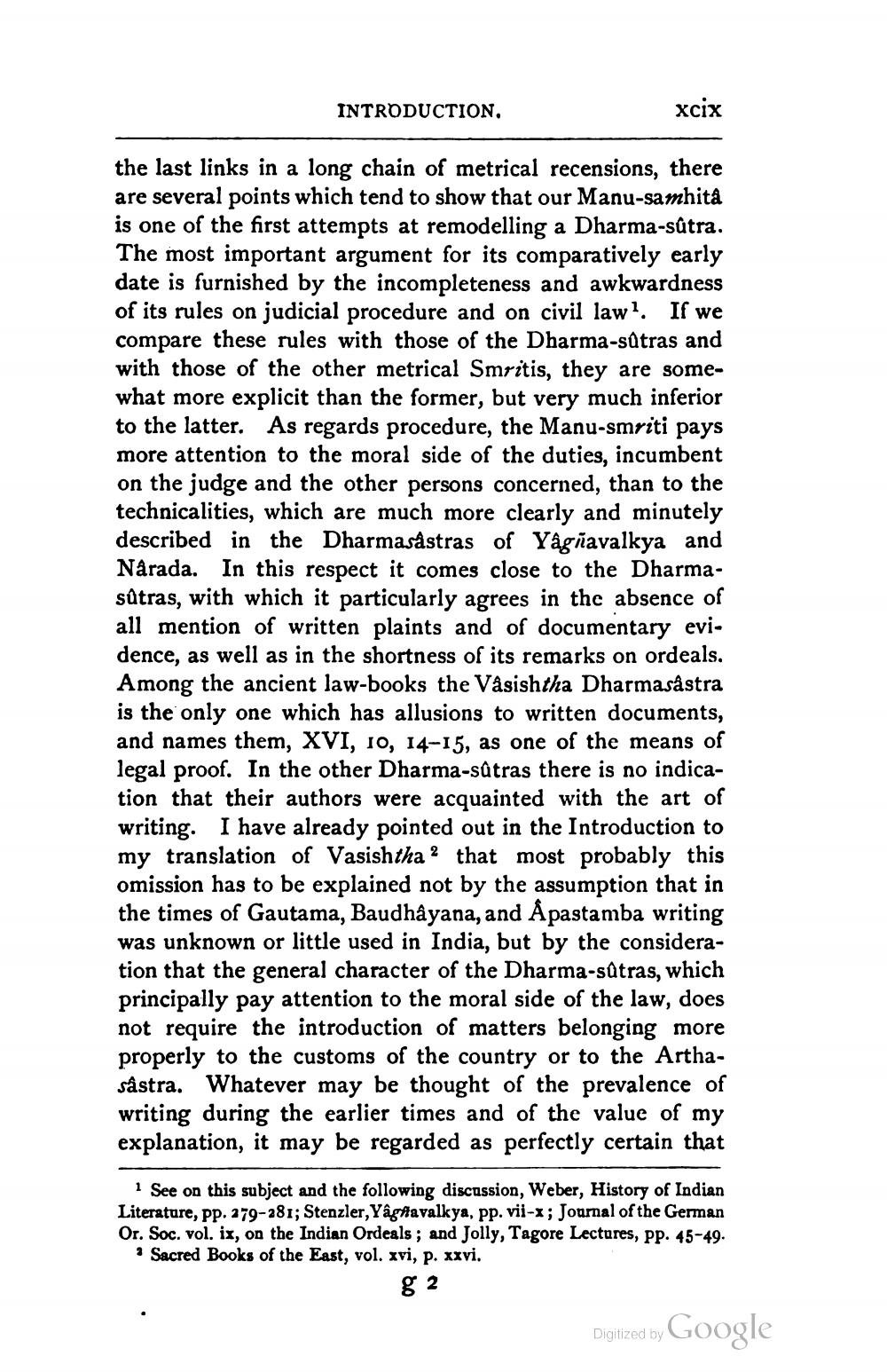________________
INTRODUCTION,
xcix
the last links in a long chain of metrical recensions, there are several points which tend to show that our Manu-samhita is one of the first attempts at remodelling a Dharma-sútra. The most important argument for its comparatively early date is furnished by the incompleteness and awkwardness of its rules on judicial procedure and on civil lawl. If we compare these rules with those of the Dharma-sútras and with those of the other metrical Smritis, they are somewhat more explicit than the former, but very much inferior to the latter. As regards procedure, the Manu-smriti pays more attention to the moral side of the duties, incumbent on the judge and the other persons concerned, than to the technicalities, which are much more clearly and minutely described in the Dharmasastras of Yågravalkya and Närada. In this respect it comes close to the Dharmasůtras, with which it particularly agrees in the absence of all mention of written plaints and of documentary evidence, as well as in the shortness of its remarks on ordeals.
he ancient law-books the Våsishtha Dharmasastra is the only one which has allusions to written documents, and names them, XVI, 10, 14-15, as one of the means of legal proof. In the other Dharma-sútras there is no indication that their authors were acquainted with the art of writing. I have already pointed out in the Introduction to my translation of Vasishtha ? that most probably this omission has to be explained not by the assumption that in the times of Gautama, Baudhayana, and Apastamba writing was unknown or little used in India, but by the consideration that the general character of the Dharma-sútras, which principally pay attention to the moral side of the law, does not require the introduction of matters belonging more properly to the customs of the country or to the Arthasastra. Whatever may be thought of the prevalence of writing during the earlier times and of the value of my explanation, it may be regarded as perfectly certain that
i See on this subject and the following discussion, Weber, History of Indian Literature, pp. 279-281; Stenzler, Yâgtavalkya, pp. vii-x; Journal of the German Or. Soc. vol. ix, on the Indian Ordeals; and Jolly, Tagore Lectures, pp. 45-49. a Sacred Books of the East, vol. xvi, p. xxvi.
g 2
Digitized by Google




